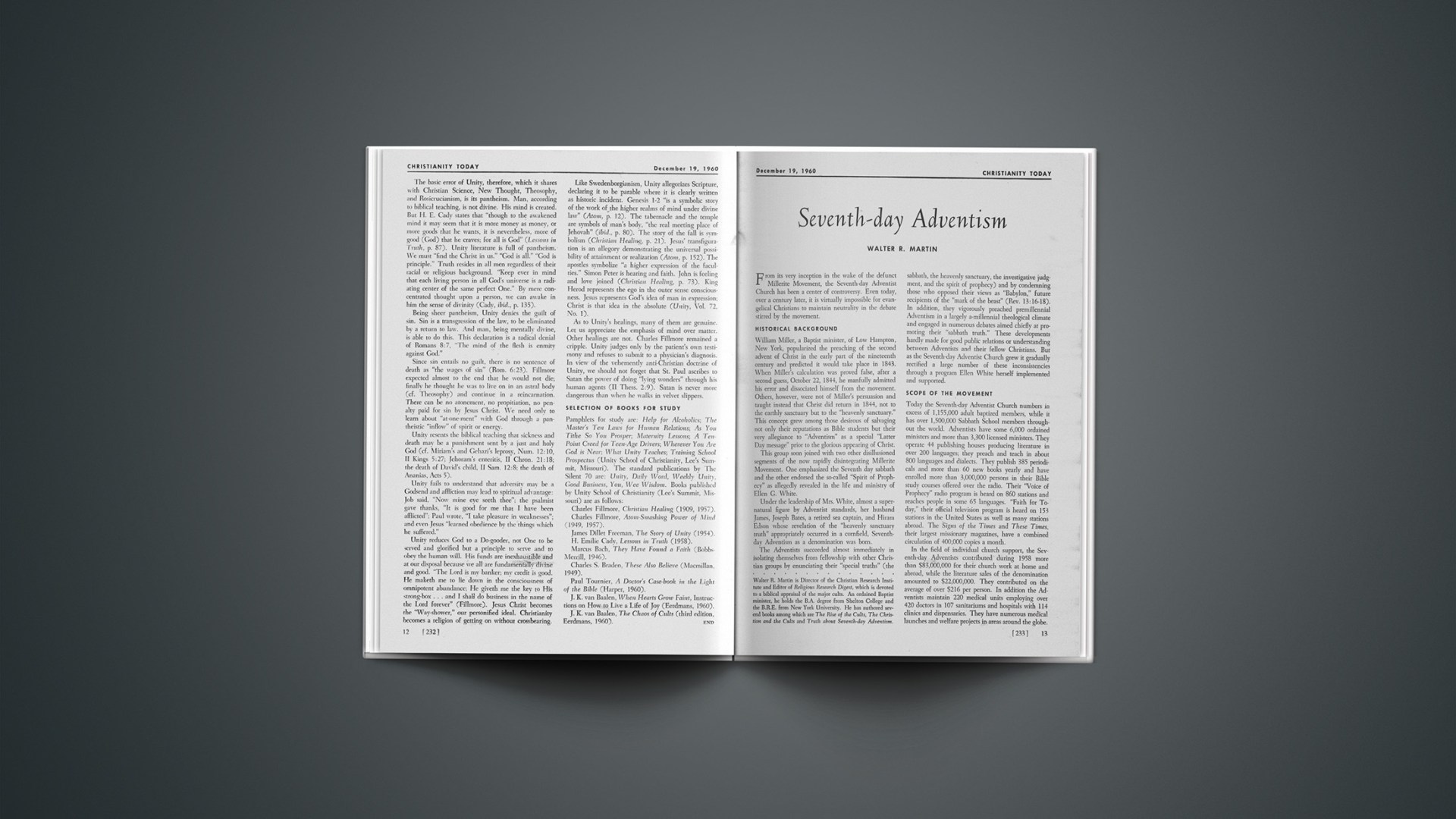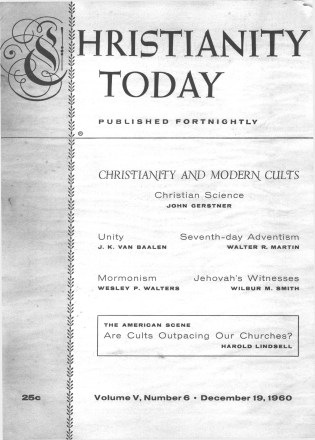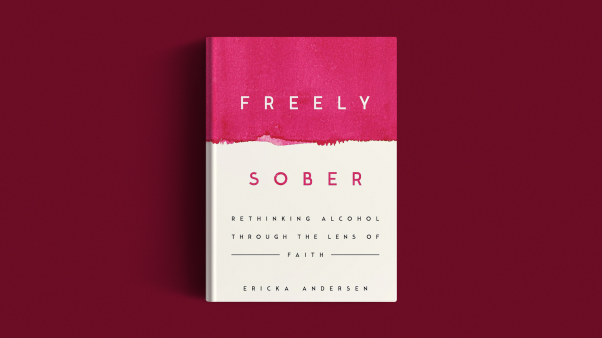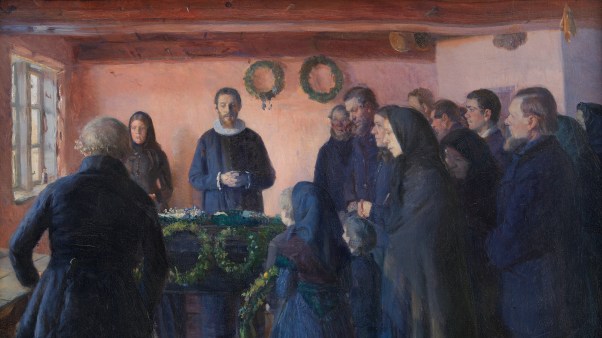From its very inception in the wake of the defunct Millerite Movement, the Seventh-day Adventist Church has been a center of controversy. Even today, over a century later, it is virtually impossible for evangelical Christians to maintain neutrality in the debate stirred by the movement.
HISTORICAL BACKGROUND
William Miller, a Baptist minister, of Low Hampton, New York, popularized the preaching of the second advent of Christ in the early part of the nineteenth century and predicted it would take place in 1843. When Miller’s calculation was proved false, after a second guess, October 22, 1844, he manfully admitted his error and dissociated himself from the movement. Others, however, were not of Miller’s persuasion and taught instead that Christ did return in 1844, not to the earthly sanctuary but to the “heavenly sanctuary.” This concept grew among those desirous of salvaging not only their reputations as Bible students but their very allegiance to “Adventism” as a special “Latter Day message” prior to the glorious appearing of Christ.
This group soon joined with two other disillusioned segments of the now rapidly disintegrating Millerite Movement. One emphasized the Seventh day sabbath and the other endorsed the so-called “Spirit of Prophecy” as allegedly revealed in the life and ministry of Ellen G. White.
Under the leadership of Mrs. White, almost a supernatural figure by Adventist standards, her husband James, Joseph Bates, a retired sea captain, and Hiram Edson whose revelation of the “heavenly sanctuary truth” appropriately occurred in a cornfield, Seventh-day Adventism as a denomination was born.
The Adventists succeeded almost immediately in isolating themselves from fellowship with other Christian groups by enunciating their “special truths” (the sabbath, the heavenly sanctuary, the investigative judgment, and the spirit of prophecy) and by condemning those who opposed their views as “Babylon,” future recipients of the “mark of the beast” (Rev. 13:16–18). In addition, they vigorously preached premillennial Adventism in a largely a-millennial theological climate and engaged in numerous debates aimed chiefly at promoting their “sabbath truth.” These developments hardly made for good public relations or understanding between Adventists and their fellow Christians. But as the Seventh-day Adventist Church grew it gradually rectified a large number of these inconsistencies through a program Ellen White herself implemented and supported.
SCOPE OF THE MOVEMENT
Today the Seventh-day Adventist Church numbers in excess of 1,155,000 adult baptized members, while it has over 1,500,000 Sabbath School members throughout the world. Adventists have some 6,000 ordained ministers and more than 3,300 licensed ministers. They operate 44 publishing houses producing literature in over 200 languages; they preach and teach in about 800 languages and dialects. They publish 385 periodicals and more than 60 new books yearly and have enrolled more than 3,000,000 persons in their Bible study courses offered over the radio. Their “Voice of Prophecy” radio program is heard on 860 stations and reaches people in some 65 languages. “Faith for Today,” their official television program is heard on 153 stations in the United States as well as many stations abroad. The Signs of the Times and These Times, their largest missionary magazines, have a combined circulation of 400,000 copies a month.
In the field of individual church support, the Seventh-day Adventists contributed during 1958 more than $83,000,000 for their church work at home and abroad, while the literature sales of the denomination amounted to $22,000,000. They contributed on the average of over $216 per person. In addition the Adventists maintain 220 medical units employing over 420 doctors in 107 sanitariums and hospitals with 114 clinics and dispensaries. They have numerous medical launches and welfare projects in areas around the globe.
It is interesting to note by way of contrast that the average per capita contribution for all denominations in the United States is $48.81! Though still a relatively small denomination, the Adventists claim to have more missionaries active on foreign fields than any Protestant body except the Methodists who have a little over 1500; the Adventists have in excess of 1400. The total Adventist working force is more than 46,000 persons, a total of 12,500 churches organized in the 425 conferences and union conferences. The Adventist school system, comprising 5,216 schools and colleges, employs more than 12,000 teachers. Approximately 275,000 are attending their schools.
The growth of the denomination obviously has been rapid and the zeal of its devotees enviable. With its rigid adherence to the basic principles of the Christian Gospel and its strict demand for a “separated” life (abstinence from tobacco, alcohol, worldly amusements and certain articles of diet), Seventh-day Adventism has a definite appeal to a considerable segment of our populace. Both in the United States and abroad it continues to grow in numbers, in missionary influence and in public status.
BASIC THEOLOGY
The basic theological structure of Seventh-day Adventism is essentially orthodox. The movement holds to the inspiration of Scripture, the Christian doctrines of the Trinity, Deity of Christ, Virgin Birth, Vicarious Atonement, Bodily Resurrection, and Second Advent of our Lord. Despite some apparent tendencies toward legalism (emphasis upon the decalogue, particularly the sixth commandment, and abstinence from foods prohibited under the Mosaic legislation) Adventists in their evangelical efforts and general church worship teach that salvation is by grace alone through faith in Jesus Christ. For them observance of the law of God is one of the good works that are a by-product of such a redemption (Eph. 2:8–10). After a thorough examination of the theology of Seventh-day Adventism and a wide acquaintance with its leadership, churches, and educational institutions in the United States and on the world mission field, this writer is convinced that it is essentially a Christian denomination, but that in the over-all perspective its theology must be viewed as more heterodox than orthodox, and that its practices in not a few instances might rightly be termed “decisive.”
HETERODOX DOCTRINE
Historic Christianity differs from the theology of Seventh-day Adventism in the following major ways:
1. Adventism teaches that the Seventh-day Sabbath is obligatory on all Christians as a mark of “true obedience” to the Lord. This has never been the historic position of the Christian Church since the days of the Apostles. Not one line in the New Testament after the resurrection of our Lord indicates that there is to be concern about the keeping of days. Romans 14 is explicit in stating that believers are not to judge each other in the matter of the observation of days or dietetic prohibitions. Adventists are guilty of violating this principle since they repeatedly insist upon Sabbath observance for those who have no conviction on this question. Paul instructs the Church to “let every man be fully persuaded in his own mind.” In Colossians, chapter 2, the apostle charges the Church not to be enslaved to the regulation of feast days, new moons and sabbaths; and in Galatians, historically written against legalism, he is disturbed because of their concern about the observance of “days.” Adventists would do well to take these portions of Scripture more seriously rather than compile voluminous quotations from the Old Testament and the New Testament prior to the Resurrection to obscure the obvious intent of the Apostolic message.
2. The theology of Adventism is also deficient because of the authoritative status it assigns to its own extra-biblical literature. This it does by utilizing the writings of Ellen G. White who allegedly possessed “the gift of prophecy.” Though I am convinced that Seventh-day Adventists do not worship or believe in the infallibility of Mrs. White’s counsels, it is a disturbing sight to attend their quadrennial session and hear the speakers monotonously “buttress” the clear teaching of the Scriptures by various quotations from the writings of Mrs. White. We need not believe that Mrs. White’s “visions” were of the devil in order to reject them.
3. One doctrine peculiar to Seventh-day Adventism is that of the so-called “heavenly sanctuary and the investigative judgment.” This view maintains that Christ entered into the “second phase” of his heavenly ministry in 1844, a view which is nothing more than a projection of the Hiram Edson “vision” redefined and spiritualized to escape the obvious deficiencies of the earlier literalistic view. In Edson’s view, fully developed by O. R. L. Crosier and endorsed by Ellen G. White, Christ then actually passed from the first apartment of the sanctuary in heaven into the second apartment. This, however, is flatly contradicted by the book of Hebrews which declares that “he entered once into the holy place [first and second apartments, if you will], having obtained eternal redemption for us” (Heb. 9:12). Since the Book of Hebrews was written well before 1844, our Lord could hardly be construed as waiting for eighteen centuries to elapse before entering the “second apartment.” In their book Questions on Doctrine, the Adventists have entered a footnote on page 385 which mentions the exegesis of the previously quoted passage in Hebrews and indicates their awareness of the linguistic difficulty of supporting the old Edson-Crosier-White dogma.
The “investigative judgment” theory holds that there is a judgment going on in heaven now in which the cases of those who believe on Christ here on earth are being reviewed to determine whether they are “worthy” of eternal life. This view was rejected by James White himself far more eloquently than I can present a refutation. One regrets that under the pressure of his wife’s “visions” and the circumstances which surrounded him at a later date he retracted what is an almost flawless refutation of the position endorsed by the Adventist denomination. We might add that any careful reading of John 5:24 would indicate that the Christian has already passed from death to life and shall never come under judgment for his eternal destiny, since Christ bore that judgment fully upon the Cross (Col. 2:14). We shall of course appear before the judgment seat of Christ for those deeds done in the body; but this is a judgment of rewards, as Scripture clearly indicates, not of eternal destiny. The “investigative judgment” is a modified Arminian device for stimulating obedience in the life of Adventists—obedience that ought to be motivated by the love of the Lord Jesus Christ and overwhelming gratitude for his full and free salvation.
CONDITIONAL IMMORTALITY
Finally, Adventism is apparently unalterably committed to the doctrine of conditional immortality. Such a view which does away with the doctrine of hell and eternal conscious punishment of the lost has been espoused by not a few theologians and laymen through the centuries, but 98 per cent of the Christian Church has chosen to follow the doctrine of the Apostles and of our Lord, who taught the existence of conscious punishment of an eternal duration in terms few could fail to understand (Matt. 25:41, 46).
These and other views, not to mention the disconcerting Adventist habit of proselytizing Christian converts and failing to identify themselves properly when conducting large campaigns, are a constant source of misunderstanding between Adventists and their fellow Christians. They are also a strong deterrent to a full and effective fellowship with Seventh-day Adventists in the minds of some.
CHRISTIAN FELLOWSHIP
That fellowship of Christians is commanded by Jesus Christ and the Apostles none can fairly deny, but that its implementation is made difficult by the divisive activities of certain members of the “Body” no one can challenge. Until Seventh-day Adventists and certain of their overly antagonistic detractors come to terms with the great biblical command of love between brethren and discipline within the Church, which is his Body, friction will continue and will make full realization of fellowship extremely difficult. That Adventists should be recognized as Christians and that fellowship should be extended to them we do not deny. They are a Christian denomination rather than an anti-Christian cult. But that they have been divisive in their activities and legalistic in their demand that they be recognized as the enunciators of “special truths” unknown to the Church as a whole for almost two thousand years we most emphatically reject. We must oppose those sections of their theology which are contrary to the historic Christian message, but we must do so by speaking the truth in love.
SELECTION OF BOOKS FOR STUDY
It is difficult to recommend authoritative sources dealing with the history and doctrines of Seventh-day Adventism because so much of the literature is deeply prejudiced and lacks documentation and Christian charity. The following works, however, do give Adventism a reasonable objective consideration and are generally reliable:
Dictionary of American Biography, vol. 12, Article on William Miller.
W. Fletcher, Reasons for My Faith (William Brooks and Company, Ltd., Sydney, Australia).
Norman C. Deck, The Lord’s Day or the Sahhath (Bridge Printery Ltd., Sydney, Australia).
F. E. Mayer, The Religious Bodies of America (Concordia).
Questions on Doctrine (Review and Herald, Takoma Park, 1957).
Walter R. Martin, The Truth About Seventh Day Adventism (Zondervan, 1960).
Dudley M. Canright, Seventh Day Adventism Renounced (B. C. Goodpasture, Nashville, Tennessee).
Horton Davies, Christian Deviations (Philosophical Library, New York).
J. Oswald Sanders and J. Stafford Wright, Some Modern Religions (Inter-Varsity Press, England).
John Gerstner, Theology of the Major Sects (Baker, 1960).
J. K. van Baalen, The Chaos of Cults (Eerdmans, 1960).
Harold Lindsell, “What of Seventh-day Adventism?” CHRISTIANITY TODAY (Mar. 31 and Apr. 14, 1958).
Frank H. Yost, “A Seventh-day Adventist Speaks Back,” CHRISTIANITY TODAY (July 21, 1958).
Douglas Auchincloss, “Peace With the Adventists,” Time Magazine (Dec. 31, 1956).
Donald Grey Barnhouse, “Are Seventh-day Adventists Christians?” Eternity (Aug., 1956).
Samuel M. Shoemaker is the author of a number of popular books and the gifted Rector of Calvary Episcopal Church in Pittsburgh. He is known for his effective leadership of laymen and his deeply spiritual approach to all vital issues.










